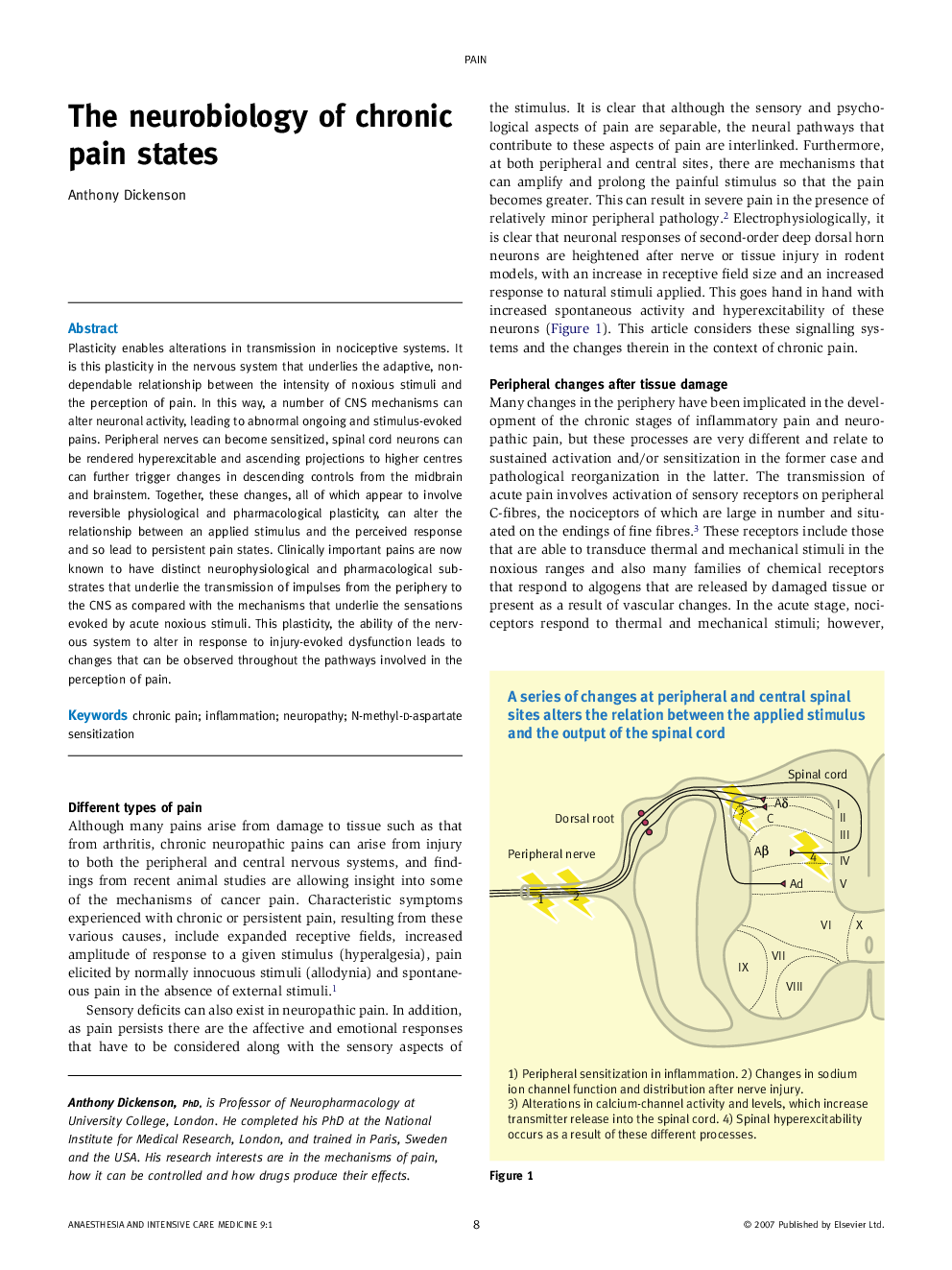| Article ID | Journal | Published Year | Pages | File Type |
|---|---|---|---|---|
| 2743114 | Anaesthesia & Intensive Care Medicine | 2008 | 5 Pages |
Plasticity enables alterations in transmission in nociceptive systems. It is this plasticity in the nervous system that underlies the adaptive, non-dependable relationship between the intensity of noxious stimuli and the perception of pain. In this way, a number of CNS mechanisms can alter neuronal activity, leading to abnormal ongoing and stimulus-evoked pains. Peripheral nerves can become sensitized, spinal cord neurons can be rendered hyperexcitable and ascending projections to higher centres can further trigger changes in descending controls from the midbrain and brainstem. Together, these changes, all of which appear to involve reversible physiological and pharmacological plasticity, can alter the relationship between an applied stimulus and the perceived response and so lead to persistent pain states. Clinically important pains are now known to have distinct neurophysiological and pharmacological substrates that underlie the transmission of impulses from the periphery to the CNS as compared with the mechanisms that underlie the sensations evoked by acute noxious stimuli. This plasticity, the ability of the nervous system to alter in response to injury-evoked dysfunction leads to changes that can be observed throughout the pathways involved in the perception of pain.
